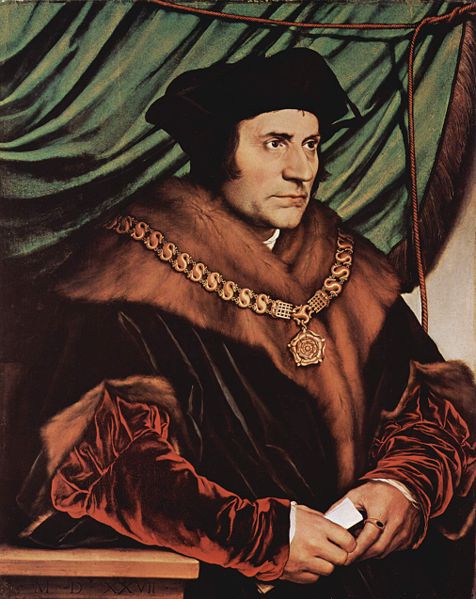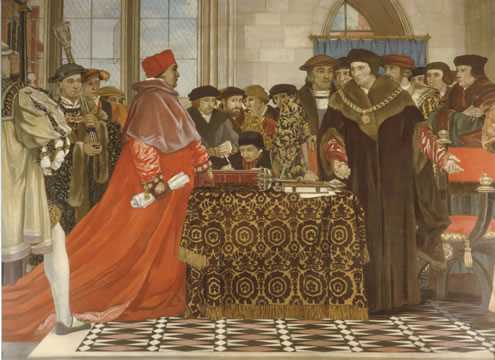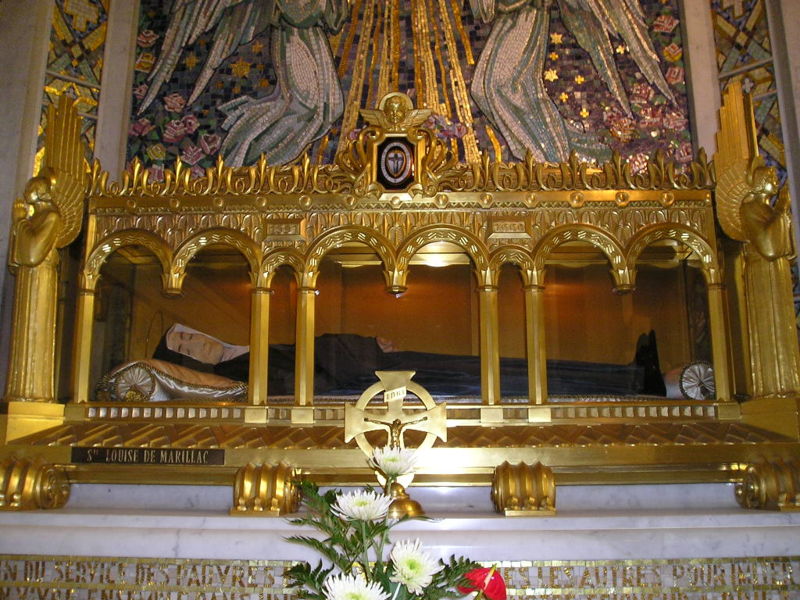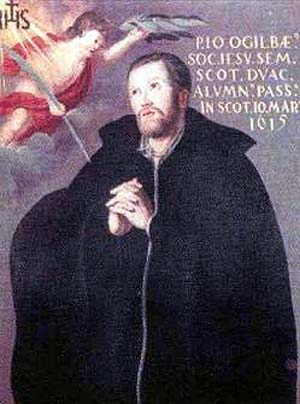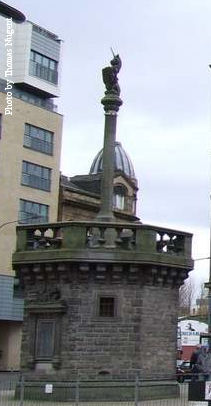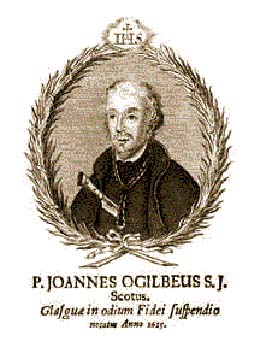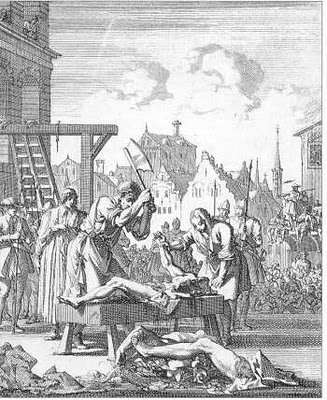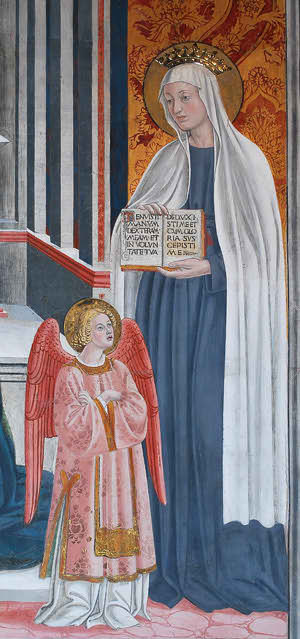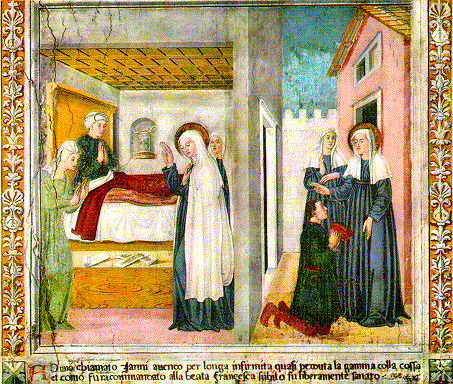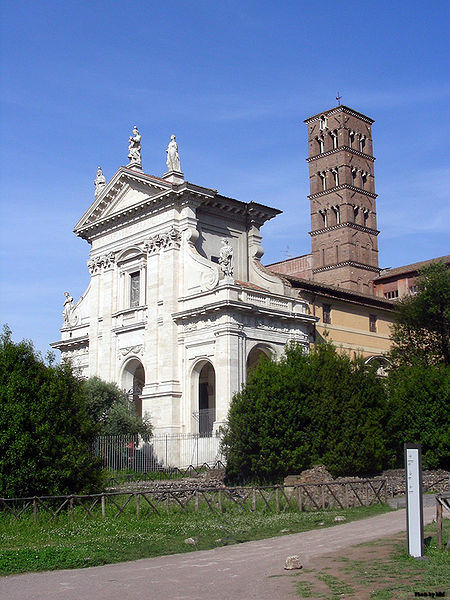THE ROMAN CATHOLIC CHURCH
Her Doctrine and Morals
Fourth Sunday in Lent
30 March 2014
|
![[Image]](http://friarsminor.org/ss.gif)
The Sunday
Sermon
|
Dear Friend,
There is great symbolism in today's Gospel for us to contemplate today.
We learn from the parallel Gospel of St. Matthew that the multiplication
of bread and fishes was done by Jesus, but He distributed them only
through His Disciples. All those who ate were fed by God, but through
the hands of the Apostles.
So, it is that God has seen fit to give us spiritual food throughout
history, even to today. If we are to be truly fed the life giving bread
of the Word of God, we must approach The Church, or in other words the
bishops who have been appointed by the Holy Ghost to sanctify, teach and
govern Her. Outside of The Church or outside of Her bishops there is no
salvation, because The Word of God is not there.
Those who have taken the Bible as the word of God and claim to receive
it directly from God, deceive themselves. They indeed take food, but in
not taking it from the hand of God's ministers their digestion suffers
greatly. The Church is the only living authority that is the sole
dispenser of the Word of God, and She is also the sole guarantee and
protector of It. Those who take the written Word of God and separate it
from the Living Tradition and Authority, have some of the raw
ingredients for the food for their soul, but they cannot assemble it
correctly so that it will give them spiritual life. They have the
ingredients, but do not have the recipe, or they refuse to follow the
recipe and end up with indigestible truths. Because certain truths are
indigestible to them, they then begin to deny and cast out all that they
cannot accept. This is what has happened with the Protestants
throughout history. Private interpretation demands rejection of whatever
is unpalatable to the individual. It is unpalatable because they have
refused to receive it correctly from the hands that God has appointed to
distribute it.
The number of believers has been reduced to a remnant, due to this
Protestant/Pagan influence in the world. Nonetheless, the Church will
continue until the end of time. This God has promised to us. One of the
necessary marks of the Church is that She is Apostolic. We, therefore,
conclude that there will always be at least one true bishop in the
world, and that those who will be saved will receive the life giving
spiritual food of the Word of God from the hands of these bishops.
Noting the Great Apostasy and the fewness of bishops, should not
discourage us. Just as Jesus multiplied the bread and fishes, so He can
and does multiply the words of His bishops. We have a treasure trove of
the recorded teachings of the Apostles and their successors throughout
history. The fewness of true bishops today is a result of the
diminishing number of true Catholics. Or perhaps the converse is truer:
there are few Catholics because there are few true bishops.
In any case, God has seen fit to offer us a remedy for the scarceness of
bishops. The words and teachings of our bishops are multiplied and can
be heard throughout the world due to the advances of technology. All
those who have access to the World Wide Web, are able to hear their
bishops directly, or the priests who have been approved and appointed to
teach in their names.
The governing of the Church can likewise be taken care of from a
distance. This leaves us with the matter of sanctification. Many in the
world are at such a distance that they cannot receive the sacraments.
This has always been a grave concern for the bishops in this time of
apostasy. God has seen fit in suggesting to us that we spiritually
receive the sacraments when we are physically impeded from doing so.
It has long been the suggestion and practice in the Church to make
frequent Spiritual Communions. We can in spirit repent of our sins and
unite our hearts with Jesus in the Most Holy Eucharist. God, Who sees
and knows everything, accepts the desire for the deed. Grace is ours for
the asking. This is not an empty suggestion given to quiet the
consciences of pietistic souls, but is rather a sound practice of the
saints throughout history.
The spiritual reception of the sacraments offers us the opportunity to
gain grace at all times and in all places. There is nothing to hinder
us. This great desire to receive the physical sacrament very often
softens God's Heart to such a point that He will bring a true priest to
us, or us to a true priest to receive that which our hearts desire.
Today, we still see the multiplication of the bread and fishes. We can
find the spiritual food we need so that we do not have to faint along
the way of this life. Let us beg of God these graces and open up our
hearts and minds to receive from God's appointed ministers this
life-giving food for our souls.

![[Image]](http://friarsminor.org/ss.gif)

